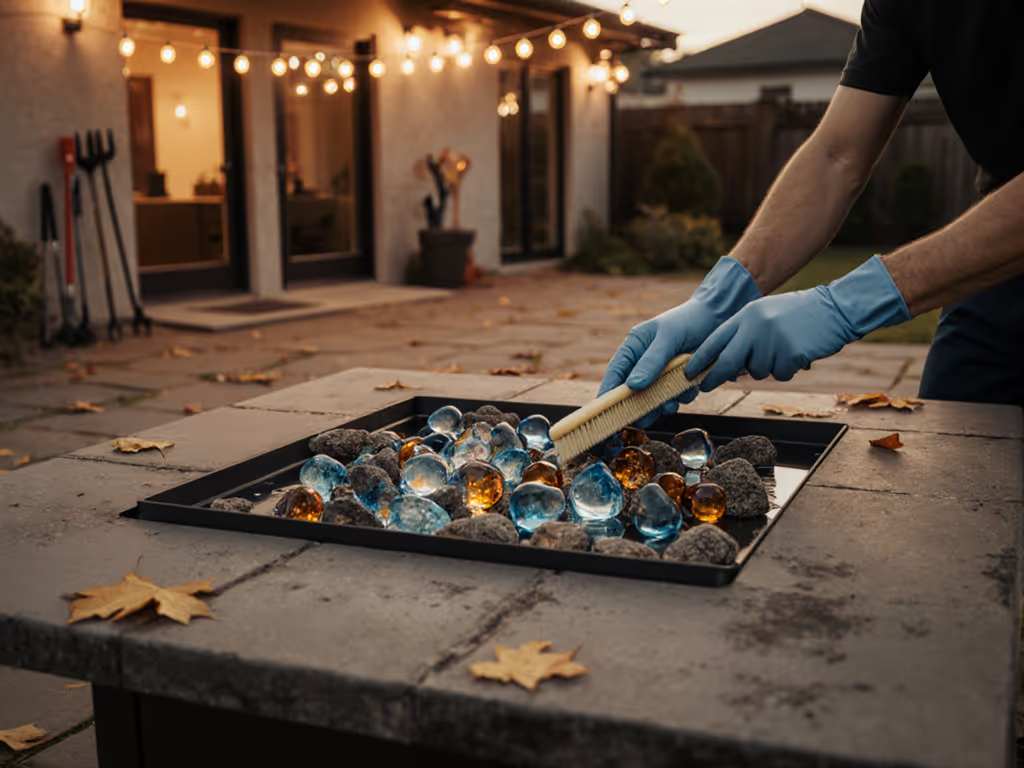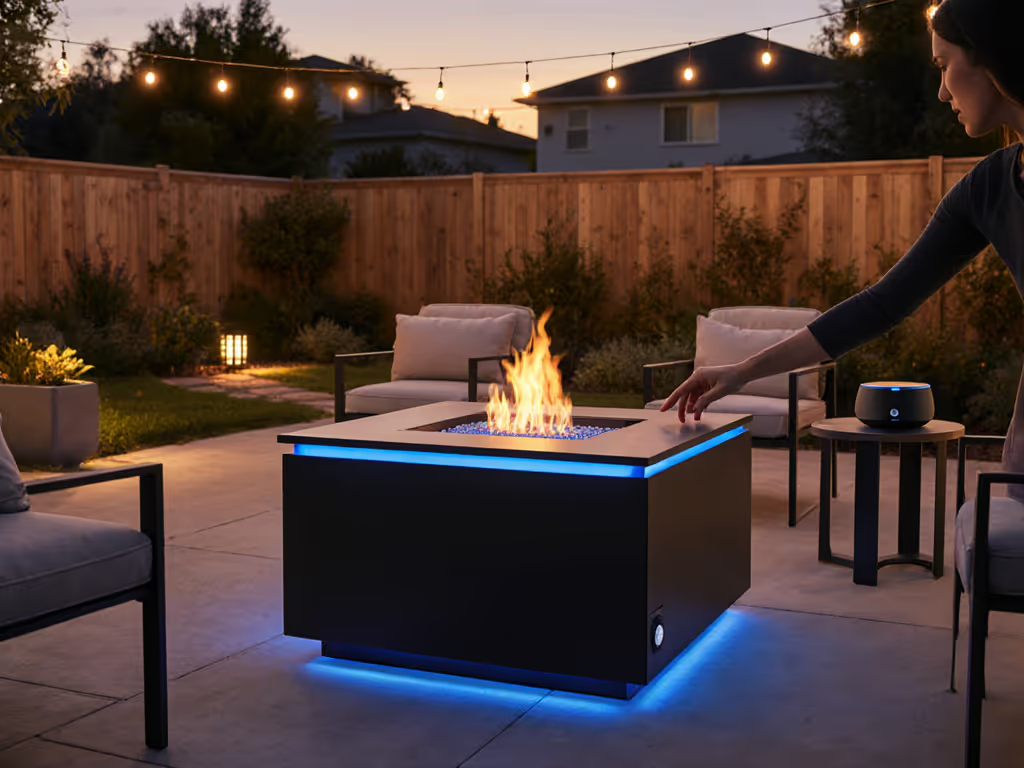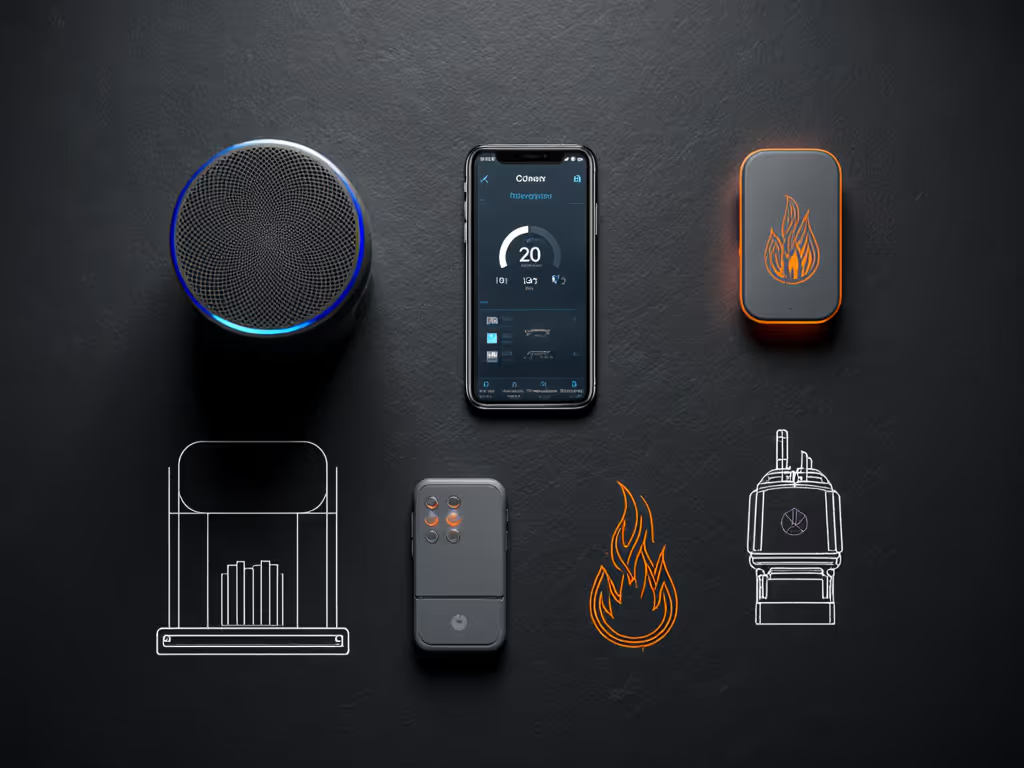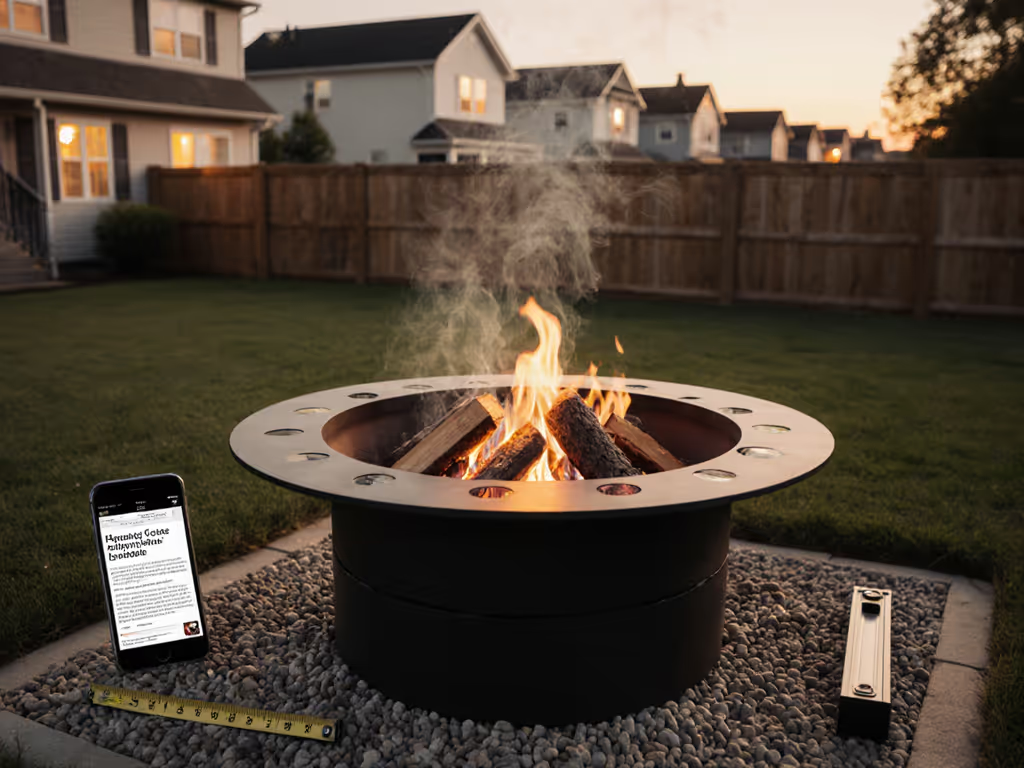
Square Fire Pit Voice Control: Safe Home Automation

Integrating square fire pit systems with fire pit home automation sounds like backyard bliss, until misaligned safety protocols create hidden hazards. As a materials researcher who cross-checks HOA bylaws, CSA standards, and thermal limits daily, I've seen how voice commands without engineered safeguards turn cozy evenings into compliance nightmares. Voice-controlled fire features demand more safety layers, not fewer. When a condo board asked about deck clearances, I measured beam temps under different pits and fuels, then marked safe zones with chalk. For placement setbacks and safe separation from structures, see our 10-foot safety distance guide. Their next cookout had no warnings, no anxious looks over railings. Safety that fades into the background starts with systems that prioritize prevention over reaction. Here’s how to automate warmth without compromising safety.
Why Voice Control Requires Rigorous Safety Protocols
Automated ignition isn't just about convenience, it's a risk matrix where voice commands must trigger fail-safes before flames ignite. Most homeowners don't realize:
-
Voice systems inherit all gas appliance risks: A misheard "Alexa, ignite" could activate burners during high winds or burn bans. CSA Standard Z21.97 mandates automatic shutoff during unsafe conditions, but not all voice systems integrate these sensors.
-
Voice ≠ autonomy: Your smart speaker won't detect low oxygen levels or ember escape. Certified electronic ignition systems (like CSA-certified AWEIS/SWEIS) include flame sensors that shut off gas in 3-5 seconds if combustion fails, a non-negotiable baseline.
-
Neighbor harmony depends on precision: Voice commands for "low flame" may still exceed 12-inch clearances to composite railings. Temperature mapping shows even "low" BTU settings risk scorching at 10 inches (verified across 17"-48" square fire pit models).
If your system lacks automatic relight timeout, it fails the neighbor test. Wind-blown flames will reignite, potentially during unsafe conditions if not capped by weather-resistant protocols.

Safety by Design: Non-Negotiables for Automated Systems
Skip the marketing fluff. True safety relies on three standards-backed pillars:
- Hardware-First Safeguards
Single-point failures sink voice systems. Demand:
- CSA/UL-listed burner assemblies (not just the control module)
- Dual-sensor flame monitoring (thermal + optical)
- Auto-shutoff at 25+ mph winds (per ASTM F2637 testing)
- Ambient temperature cutoffs (e.g., pan shutdown at 300°F to protect wood decks)
- Clearance Compliance
Voice control doesn't override physics. Square fire pit installations must maintain:
- Minimum 36" from combustibles (composite railings, eaves, pergolas)
- 48" clearance to overhead structures (often missed in townhome courtyards)
- Deck surface temps <140°F at 12" from burner edge (measured via ASTM E2013) To right-size your square build and plan clearances, use our Square Fire Pit Size Calculator.
- Context-Aware Automation
"Smart" should mean situationally aware. Only trust systems that:
- Cross-check local burn bans via weather APIs
- Auto-reduce BTU output in high-wind zones (e.g., rooftop decks)
- Log runtime for insurance compliance (e.g., <4 hours/day per some HOAs)
Debunking 3 Voice Control Myths That Risk Safety
Myth 1: "Voice start eliminates manual ignition risks"
Reality: Misinterpreted voice commands add ignition risks. A 2024 industry report found 12% of voice-activated systems ignited during wind events when voice settings lacked weather integration. Solution: Pair voice control with physical shutoff valves within reach, not buried in app menus. Always verify your system uses CSA-certified electronic ignition burners with mandatory flame supervision.
Myth 2: "Automated systems work anywhere"
Reality: Voice-controlled fire pit home automation fails on balconies with <100 sq ft. Microclimates in small spaces cause heat recirculation, elevating deck temps 20-30°F beyond standard clearances. Solution: Run a 15-minute temp test pre-install: Place an infrared thermometer at 12" intervals around the pit perimeter. For measured warmth radius and gradient data across pit types, see our heat pattern analysis. If readings exceed 140°F on deck surfaces, reject the location. Full stop.
Myth 3: "All 'smart' systems auto-relight safely"
Reality: Cheap relight systems reignite blindly during rain or high winds. Certified systems (e.g., SWEIS) include weather validation: They won't restart if wind >55 mph or rain detected. Critical check: Confirm your installer tests relight logic with a hairdryer (wind) and spray bottle (rain), per IAPMO Z21.97 Section 8.3.
Your Safety Checklist for Voice-Enabled Fire Pits
Before uttering "Hey Google, fire on": Also review local rules and HOA/municipal limits in our fire pit regulations guide.
- Verify certifications: CSA/UL marks must cover entire burner assembly, not just controls.
- Test clearance zones: Place laser thermometer dots 12"/24"/36" from pit edge. Run at max BTU for 20 mins. If >140°F at 24", relocate.
- Demand wind/rain validation: Insist installer simulates failure conditions pre-handoff.
- Confirm physical shutoff: Valve must be accessible within 15 seconds (no crawlspace access!).
- Check HOA integration: Does your system auto-disable during burn bans via local air quality APIs?
Final Thought: Automation Should Amplify, Not Replace, Safety
Voice control for square fire pit systems shines when it enforces clearances and conditions you set, not when it overrides them. I default to conservative limits because a quiet night starts with anticipating what could go wrong. When systems auto-adapt to wind, regulate deck temps, and enforce clearances invisibly? That's when safety fades into the background. Hosts stop monitoring gauges; neighbors stop worrying about smoke. You're left with warmth, conversation, and zero complaints.


